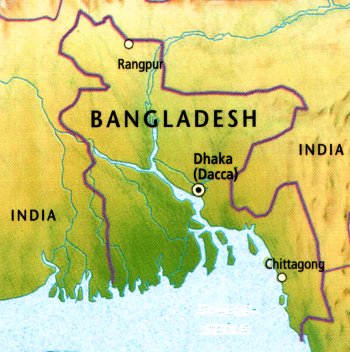The latest country-wide wind map unveiled in July created new optimism for green energy generation from the coastal belt’s untapped wind resources.
Wind mapping experts expressed the optimism that between 10,000MW to 20,000MW power generation could be possible from the coastal belt’s wind resources.
The government’s Power Sector Master Plan 2016 set the target of generating 2,400MW of power from renewable energy sources by 2021 including 1,153MW from wind.
Earlier, experts considered that the target set by the government was unattainable after two wind mills, the 0.9MW Muhuri Dama in Feni and the 1MW Kutubdia Island off Cox’s Bazaar, failed to deliver due to technical flaws.
But the new wind map created fresh optimism.
The Sustainable and Renewable Energy Development Authority of Bangladesh, expects that around 700MW of electricity could be generated from the coastal belt’s untapped wind resources by 2021.
SREDA director Sheikh Reaz Ahmed told New Age that the new wind map created the scope for private sector entrepreneurs to carry out their own feasibility studies for investing in wind power projects in the coastal belt of Bangladesh.
Assigned by the SREDA, the National Renewable Energy Laboratory of the United States prepared the wind map of the Bangladesh’s coastal belt.
The wind map reveals that it would be possible to generate electricity commercially using 80 meter high and taller turbines in the coastal districts of Barguna, Patuakhali, Bhola, Lakshmipur, Feni, Chittagong and Cox’s Bazaar.
In July, NREL’s senior project leader Mark Jacobson presented the findings at a function attended by top officials of the country’s power sector.
During the presentation, Jacobson showed that the average wind speed in the coastal belt of Bangladesh varied between 5.75 metre per second and 7.76 metre per second.
NREL mapped the wind speed, direction, temperature and humidity variations and a host of other conditions using nine measurement stations at Natore, Chandpur, Cox’s Bazaar, Chittagong, Rangpur, Mymensingh, Habiganj and Khulna since June 2014.
NREL recorded 6 to 7.5 metres per second wind speed at 80 metre hub heights in the coastal belt, which is considered to be good for the deployment of wind turbines.
According to NREL, cost of wind energy would be $ 45 per kilowatt if power was generated using the wind speed of seven metre per second.
The cost would rise to $ 60 if the wind speed fell by one metre per second.
The NREL used towers and Sonic Detection And Ranging technology, in short SoDAR for collecting the wind related data for mapping the country’s wind resources.
For Wind Resources Mapping, NREL collected data at altitudes ranging from 62 to 80 metres.
Speaking at the function, state minister for power, energy and mineral resources Nasrul Hamid said the government would soon formulate the needed plans and policy in the light of the latest wind map.
A logical planning was crucial to attract investment for power generation using wind resources, he said.
Power division joint secretary Mohammad Alauddin told New Age that the government had already formed a steering committee for the exploration of wind energy.
It would quite expensive to install 80-metre high turbines, professor Saiful Huque, director of Institute of Energy of the University of Dhaka told New Age.
He suggested for installing 20 to 30 metre-tall high-tech low speed turbines along the coastal belt to make the project cost effective.
He said that using advanced wind power generation technology it would be possible for Bangladesh to generate electricity using three metre per second wind cutting speed.
Saiful Huque said that the wind mill’s capacity could be gradually increased from 5kW to 1MW depending on results of feasibility studies carried out over at least two years.
For the maximum utilization of wind energy, Saiful advised the government to recruit skilled manpower.
newagebd.net


